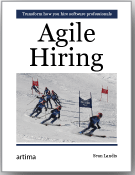|
|
|
Sponsored Link •
|
Summary
Day Two at JavaOne brought a few more interesting announcements.
|
Advertisement
|
The Day Two JavaOne keynote was pretty thin on content. The first speaker, David Ward, CTO & Chief Architect, Juniper Networks, had an interesting topic: How intelligence in the network could change the application landscape. At least I think that's what his topic was. It was hard to tell because he never came out and said it and the presentation was clearly targeted at some other audience. Most of the crowd was heads down on their mobile devices half way through.
Big applause was raised for the announcement of JDK 7 preview on Mac OS. This is an important platform for Java developers and hopefully will get more love in the future. IBM announced they had released Java 7 on all platforms. Take that!
This was really wierd: A roadmap was presented that included Java 8 for the Summer 2013. There was mumbling because just yesterday, the target date was in 2012. It had been moved, according to Oracle, because of community complaints that 2012 was too soon after the release of Java 7; there should be two years between major releases. What? I don't believe a word of it. On the positive side, Oracle said they would use the extra time to include more things such as migrating more libraries to use Project Lambda.
Rob Benson, Director of Runtime Systems at Twitter was brought on stage to announce joining in on OpenJDK and the JCP. The stated interests were JVM multi-language support (they use Java, Scala, and Clojure), monitoring, management, and provisioning.
JavaFX is still dead, and the day 2 "Run Anywhere" demo proved it. The speaker first showed a poor-quality game running on a Windows tablet, then on a Galaxy, and finally on an iPad. She mumbled that it had to be built differently to run on each. Not compelling at all. NASA was brought up to show screen shots of their use of JavaFX. Was a live demo out of the question? NASA is a non-profit so anything they choose is somewhat questionable.
In the small profile space, Oracle announced that they would move Java ME to be a subset of SE. Anything written in ME would compile on SE. They would also make the CDC profile more like SE.
A parade of partners were brought up to briefly explain what they were doing. This was total filler. Then Cameron Purdy came up to extoll the wonders of Java EE and the cloud initiative. It was a recap of yesterday with lots of Koolaid poured on top.
Sean Comerford, Site Architect, ESPN announced they were working on an API initiative to access ESPN's data and content. That sounds interesting.
Adam Messenger introduced Project Avatar. It sounds like a blueprint thing. For the client, they specify HTML 5, high performance JavaScript, and offline capabilities. For the server, they talk about their cloud initiative with WebSockets, JSON, JAX-RS, etc. Then they introduce the programming model, which they feel is the missing piece. It was about events, bi-directional communication, and unifying ME, SE, and EE.
I attended one session, Data Parallelism with the Fork/Join Framework in Java 7, presented by David Holmes. It was a great presentation. Bottom line is that Fork/Join is a small API designed for a very specific use: parallel divide and conquer algorithms. It's easy to use the API, but setting up this type of algorithm turns out to be very difficult. In the area of high-performance computing, processing large data sets, etc, this framework is a big win. For the other 99% of us, I don't see this new tool changing our lives. Good to have it as an option though.
After lunch, I did a two hour book signing for my book, "Agile Hiring" with my friend and publisher, Bill Venners. Hanging out at the bookstore turns out to be a great way to run into old friends and acquaintances. I had some great conversations and sold a few books too!
I saw an interesting demo by James Ward of Heroku. It's another Cloud play but it seems really easy to use and the pricing model looks good too. Listen to the demo and get some amazing Japanese ice cream.

|
Sean Landis is the author of Agile Hiring, techniques that will transform how you hire software professionals. http://www.artima.com/shop/agile_hiring |
Have an opinion? Readers have already posted 4 comments about this weblog entry. Why not add yours?
If you'd like to be notified whenever Sean Landis adds a new entry to his weblog, subscribe to his RSS feed.
 | Sean Landis is a technologist and programmer interested in, among other things, mobile and distributed sytems, location-based services, and skiing. |
|
Sponsored Links
|